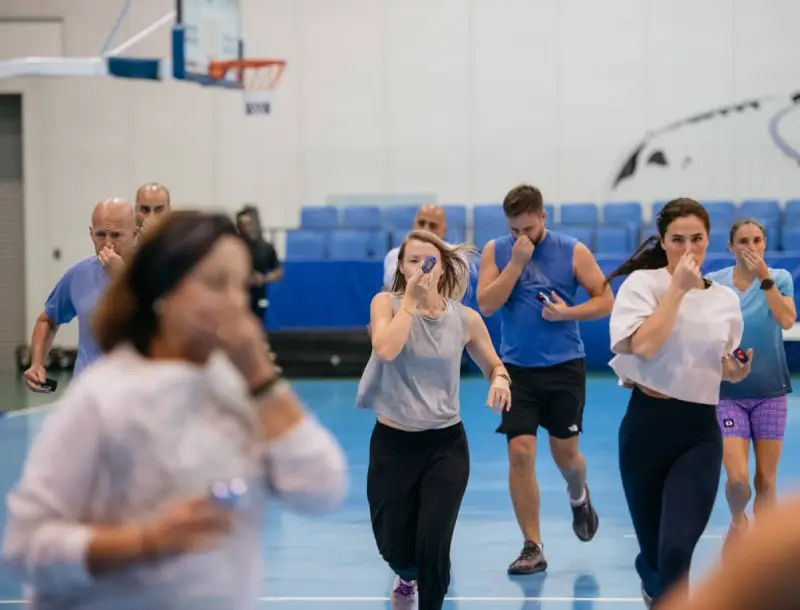In the quest for peak athletic performance, many strategies and training methodologies have emerged, each promising to enhance an athlete’s capabilities. One such method that has gained traction in recent years is CO2 tolerance training. This technique focuses on improving an athlete’s ability to tolerate higher levels of carbon dioxide (CO2) in the body, which can have profound effects on performance. Here’s a closer look at the benefits of CO2 tolerance training for athletes, with insights from renowned breathing expert Patrick McKeown.
Understanding CO2 Tolerance
CO2 tolerance refers to the body’s ability to withstand higher concentrations of carbon dioxide without experiencing discomfort or a drop in performance. During intense physical activity, the body produces CO2 as a byproduct of metabolism. Efficiently handling this increased CO2 load is crucial for maintaining optimal performance.
The Physiology of CO2 Tolerance
When CO2 levels rise in the blood, it leads to a decrease in pH, making the blood more acidic. The body’s natural response is to increase breathing rate to expel the excess CO2 and restore pH balance. However, this response can sometimes lead to hyperventilation, causing a drop in CO2 levels that can impair oxygen delivery to tissues.
Training to tolerate higher CO2 levels can help athletes better manage their breathing and maintain a more stable internal environment during intense exercise. This involves exercises that condition the respiratory system and the body’s overall buffering capacity.
Key Benefits of CO2 Tolerance Training
-
Improved Respiratory Efficiency
Athletes who undergo CO2 tolerance training often experience enhanced respiratory efficiency. This means they can maintain a steady, controlled breathing pattern even under intense physical stress. By reducing the tendency to over-breathe, athletes can optimize oxygen delivery to muscles, delaying the onset of fatigue.
-
Enhanced Aerobic Capacity
CO2 tolerance training can improve an athlete’s aerobic capacity. The ability to handle higher CO2 levels allows for better endurance during prolonged activities. This is particularly beneficial for endurance athletes such as long-distance runners, cyclists, and swimmers.
-
Increased Mental Fortitude
High CO2 levels can trigger a sense of breathlessness and panic. Training to tolerate these conditions can help athletes develop greater mental toughness and resilience. This mental edge is invaluable during competitions, where maintaining focus and composure under pressure can make the difference between winning and losing.
-
Optimized Oxygen Utilization
One of the critical benefits of CO2 tolerance training is improved oxygen utilization. Higher CO2 levels encourage the release of oxygen from hemoglobin to the muscles, a process known as the Bohr effect. By adapting to higher CO2, athletes can ensure their muscles receive more oxygen during high-intensity efforts, enhancing performance.
-
Faster Recovery
Efficient management of CO2 levels can also contribute to quicker recovery between bouts of intense activity. Athletes who can better control their breathing and maintain homeostasis recover faster, allowing for more effective training sessions and better overall performance.
Incorporating CO2 Tolerance Training
Athletes can incorporate CO2 tolerance training into their routines through specific breathing exercises and protocols. Techniques such as breath-hold exercises, controlled hypercapnic training (breathing in higher CO2 environments), and CO2 tolerance tests can help build the desired adaptations.
Patrick McKeown, a leading expert in breathing techniques and author of “The Oxygen Advantage,” advocates for incorporating breath-hold exercises as part of an athlete’s training regimen. McKeown’s methods focus on improving functional breathing patterns, increasing CO2 tolerance, and enhancing overall respiratory efficiency.
One practical tool McKeown developed to measure and track progress in CO2 tolerance is the B.O.L.T. (Body Oxygen Level Test) score. The B.O.L.T. score is a simple, effective way to assess functional breathing and CO2 tolerance. To determine the B.O.L.T. score, follow these steps:
- Sit comfortably and take a normal breath in through the nose.
- Exhale normally through the nose.
- Hold your breath after the exhale and start a timer.
- Hold your breath until you feel the first definite desire to breathe, then note the time.
A higher B.O.L.T. score indicates better CO2 tolerance and respiratory efficiency. Athletes can use this score to monitor their progress and adjust their training accordingly.
Conclusion
CO2 tolerance training offers a unique and effective way for athletes to enhance their performance. By improving respiratory efficiency, increasing aerobic capacity, and boosting mental fortitude, athletes can gain a competitive edge. As with any training regimen, it’s essential to approach CO2 tolerance training with proper guidance and gradual progression to ensure safety and maximize benefits.
Embracing CO2 tolerance training, as advocated by experts like Patrick McKeown, can be a game-changer for athletes looking to push their limits and achieve new heights in their performance. Utilizing tools like the B.O.L.T. score can provide valuable insights and help athletes fine-tune their breathing strategies for optimal results.
ABOUT US
Founded in 2001, The team at Dynamic Health And Fitness believes that individuals must take a proactive, integrated approach on their personal vitality. Our mission is to provide the strategies and techniques necessary for individuals to enhance their lives and also impact those around them. We provide cutting edge programming that fuels our performance center and suite of mobile apps. Our goal is to become a leading resource for individuals, groups, and companies to create a needed shift in health.
The DHF Performance Center is located in the Syracuse, NY area and boasts world class training facilities with cutting edge technology to assist our clients in achieving their health, wellness, and performance goals.

